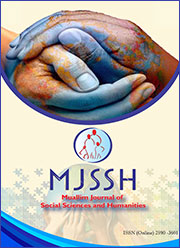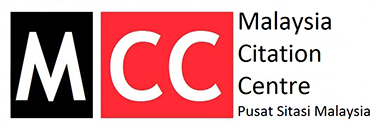China’s vision of regional connectivity, economic corridor and development cooperation in South Asia: Implications for Bangladesh
Abstract
Geopolitically South Asia is very important for China’s vision of regional connectivity, trade and development cooperation. In terms of Sino-South Asian geopolitical and economic relations, it might be said that the Bay of Bengal is very important, because it is connected with Andaman Sea, Malacca Straits, which has direct link with South Asia and South East Asia. Both China and India are very interested in the Bay of Bengal for mineral resources which has an easy link with Bangladesh, Myanmar and Indian Ocean. Through the Bay of Bengal, China wants direct regional connectivity between China and Indian Ocean through either South East Bangladesh (Cox’s Bazar) or Rakhine state of Myanmar for the expansion of its trade and development cooperation. This study has dealt with the importance of South Asia in light of the China’s geopolitical desire, trade and investment, oil and gas, development cooperation and regional connectivity in South Asia including Bangladesh. It is a qualitative study in nature, which is based on primary and secondary data. Many geopolitical issues of China, South Asia and Bangladesh have been discussed in this study. The finding is that the relationship Between China and South Asia in light of the China’s vision of trade and investment, economic corridor, and development cooperation is, of course, pivotal for both regions.
Downloads
References
Forum https://www.weforum.org/agenda/2015/02/5-things-to-know-about-geo-economics/
Jie,Lian. (2019,January 18).Can China Spur Economic Development in South ASia? . South Asian Voices. https://southasianvoices.org/can-china-spur-economic-development-in-south-asia/
Singh, Antara Ghosal. (2019,March 2). China’s Vision for the Belt and Road in South Asia, What progress has the BRI made in South Asia thus far? the Diplomat.
Datta, Sreeradha .(2008).Bangladesh’s Relations with China and India: A Comparative Stu dy.Strategic Analysis .32( 5),755-72. & Islam, Md. Safiqul.(2013). “Sino-Bangladesh Relations: Geo-strategic and Geo-political Implications,” In Md. Monoar Kabir(ed.), Sino-South Asian Relations: Continuity and Change, (pp.204),Bangladesh: Department of Political Science, University of Chittagong.
The Inqilab, 1 October 2015 in Md. Safiqul Islam and Tange Qingye, “China’s “Belt and Road” Initiative: Implications for Bangladesh,” Regional Studies xxxiv, no. 3 (2016): 54-74.
Das,Gurudas .(2009).Indo-Bangladesh Relations: Issues in Trade, Transit and Security. Himalayan and Central Asian Studies ,13( 4), 4-34. &Islam, Md. Safiqul.(2013). “Sino-Bangladesh Relations: Geo-strategic and Geo-political Implications,” In Md. Monoar Kabir(ed.), Sino-South Asian Relations: Continuity and Change, (pp.204),Bangladesh: Department of Political Science, University of Chittagong.
Islam,Muinul (2016,October 15). “Regional Connectivity: Current Challenges for Bangladesh,” Paper prepared for presentation in the regional seminar of the Bangladesh Economic Association - Chittagong Chapter ,25.New Age.& Islam, Md. Shafiqul .(2020,August ), A deep sea port at Sonadia-prospects and possibilities, The Financial Express
The Daily Star, October 15, 2016 &Islam, Md. Shafiqul .(2020,August ), A deep sea port at Sonadia-prospects and possibilities, The Financial Express
The New Age, April 10, 2017. &Islam, Md. Shafiqul .(2020,August ), A deep sea port at Sonadia-prospects and possibilities, The Financial Express
Dutta, Piyali.(2010). “India-Bangladesh Relations: Issues, Problems and Recent Development,” Special Report 97, Institute of Peace and Conflict Studies, New Delhi.&Islam, Md. Safiqul.(2013). “Sino-Bangladesh Relations: Geo-strategic and Geo-political Implications,” In Md. Monoar Kabir(ed.), Sino-South Asian Relations: Continuity and Change, (pp.204),Bangladesh: Department of Political Science, University of Chittagong
Pattanaik, Smruti S.(2012). Four Decades of India and Bangladesh Relations: Historical Imperative and Future Direction (pp.20).New Delhi: Gyan Publishing House.&Islam, Md. Safiqul.(2013). “Sino-Bangladesh Relations: Geo-strategic and Geo-political Implications,” In Md. Monoar Kabir(ed.), Sino-South Asian Relations: Continuity and Change, (pp.204),Bangladesh: Department of Political Science, University of Chittagong
The Times of India, April 4, 2017.
Jiming,Li. (2020). Trade ties with China to enter new stage, says Chinese ambassador, The Dhaka Tribune.
Brewster, David.(2015).An Indian Ocean Dilemma: Sino-Indian Rivalry and China’s Strategic Vulnerability in the Indian Ocean. Journal of the Indian Ocean Region, 11(1) ,48-59.
Scott, David .(2006).India’s Grand Strategy for the Indian Ocean: Mahanian Visions. Asia Pacific Review ,3(2) ,97-129.&Islam, Md. Shafiqul .(2020,August ), A deep sea port at Sonadia-prospects and possibilities, The Financial Express
Islam, Md. Shafiqul .(2020,August ), A deep sea port at Sonadia-prospects and possibilities, The Financial Express.

This work is licensed under a Creative Commons Attribution-NonCommercial 4.0 International License.











 This work is licensed under a
This work is licensed under a